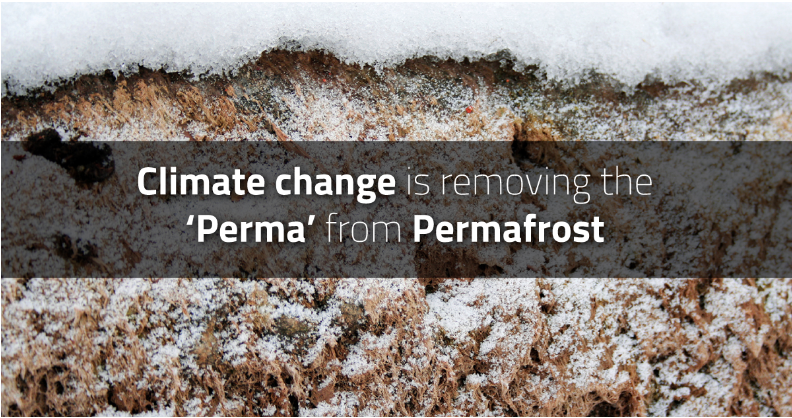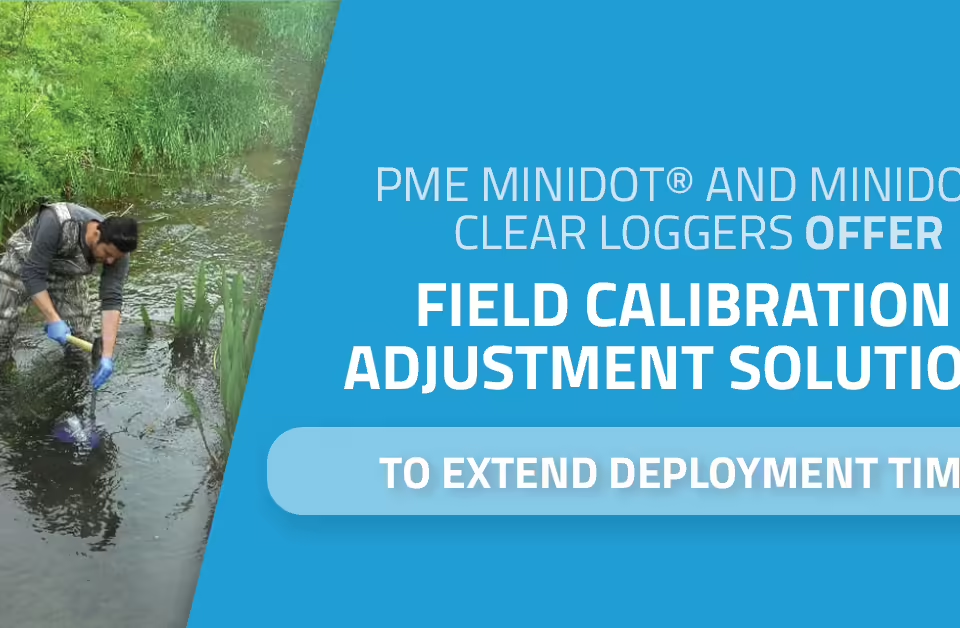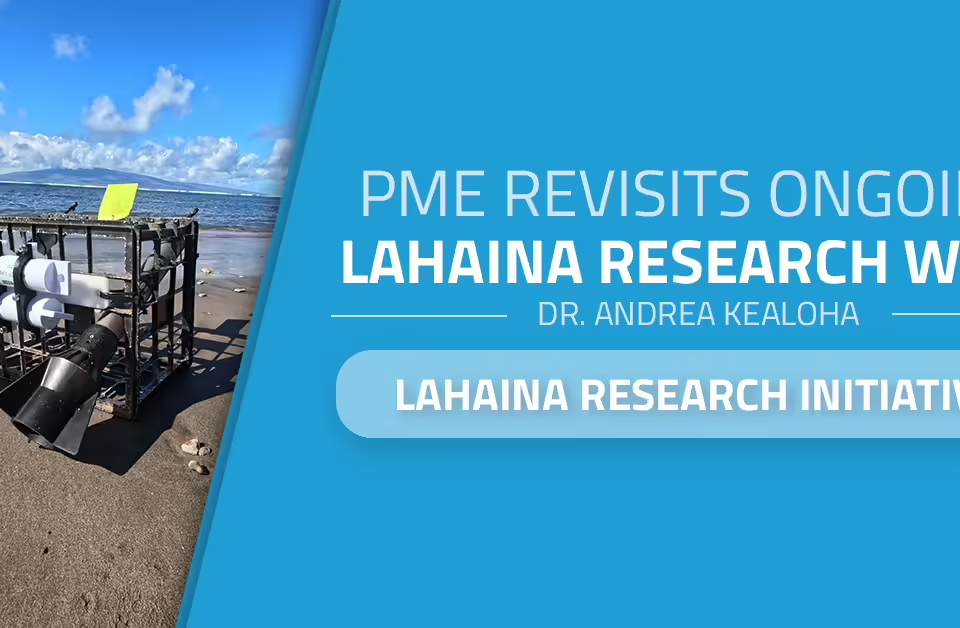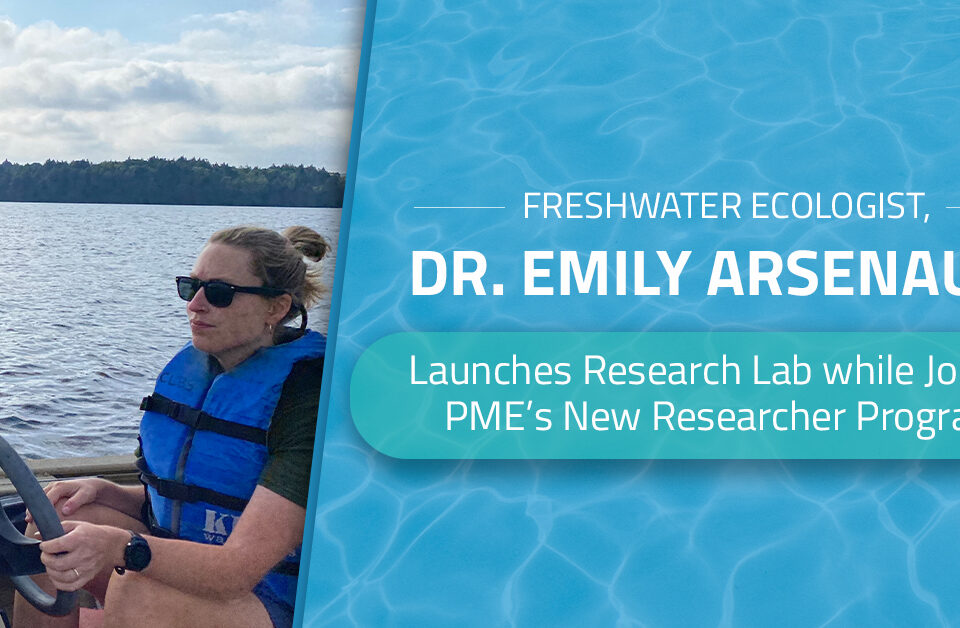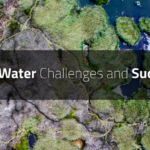
Planet Water Challenges and Successes
May 3, 2019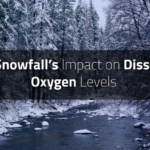
Late Snowfall’s Impact on Dissolved Oxygen Levels
June 7, 2019Permafrost is a layer of soil beneath the Earth’s surface which has remained frozen for at least two years. Varying in depth from one meter to more than 1,000 meters, permafrost accounts for almost a quarter of all Northern Hemisphere landmass. Typically found in high latitude regions of the far north, permafrost also occurs in isolated patches in slightly more southern, but high alpine regions. It exists below the ocean floor in areas where surface air temperatures rarely rise above freezing.
Arctic warming is causing widespread thawing of permafrost areas. Scientists project that this thawing will continue and worsen, with permafrost in the Northern Hemisphere melting at a rising rate. Researchers at the National Snow and Ice Data Center estimate that by the year 2200, 60% of the Northern Hemisphere’s permafrost will probably be melted. Permafrost melting at such a rapid pace has widespread effects, and we explore a few of them here.
The Effects of Melting Permafrost
Increasing Storm Intensity
Melting permafrost and sea ice has resulted in warmer air temperatures and rising sea levels. Warmer air causes more water to evaporate from the oceans, transferring energy and water vapor to the atmosphere, resulting in more intense storms that bring heavier rains and snows.
Dr. Timothy Hall, Senior Scientist at NASA’s Goddard Institute, has documented this increasing frequency of intense rain events. He also projects increasing hurricane intensity as a result of rising ocean temperatures. “Ocean temperature affects the ‘potential intensity’ of a hurricane, the speed limit of its strength.” Dr. Hall believes that, with rising ocean temperatures, more hurricanes will rise to the higher category levels, more severely affecting coastal cities and populations.
Flooding
The rising sea levels caused by melting ice has also brought about an increase in flooding to coastal regions. The average number of coastal flooding events suffered by US cities has skyrocketed, with Mid-Atlantic cities experiencing the biggest increases. Cities in this region flood ten times more frequently than they did in the 1950s. Similar though lesser increases are seen in other US cities and worldwide.
This increase in flooding, like the increase in storm intensity, endangers coastal cities, their residents, buildings, and infrastructure as well as local ecosystems and wildlife, challenging scientists and agencies, planners and infrastructure builders. Accurate scientific monitoring of water levels, temperatures, and content is an important first step in safeguarding cities and populations from the effects of a changing climate.
Increased Carbon Dioxide
Permafrost, in its frozen state, serves the environment by storing large amounts of both carbon dioxide and methane. When permafrost melts, heavy concentrations of these gasses are released into the atmosphere. This release creates a positive feedback loop, in which warming air causes permafrost melting, which in turn causes yet more warming air, and so on.
The increased CO2 level also causes blooming of harmful algae which can spread quickly and contaminate waters resulting in harm to humans, wildlife, and aquatic ecosystems. Scientists, government agencies, and environmental/conservation groups need innovative, accurate tools to monitor algae and other harmful substances to keep rivers, lakes, and oceans healthy.
Keeping an Eye on Melting Permafrost
Accurate information may be our most effective tool as we monitor the effects of a changing climate. Evidence gathered scientifically and presented compellingly, can persuade politicians, inform consumer habits, and help researchers plot a sustainable way forward.
At Precision Measurement Engineering (PME), we design and manufacture aquatic and environmental monitoring equipment that can help your research project move forward. Academic institutions and government agencies use and trust our innovative instruments to conduct vital research in both fresh and salt water.
Read more here about related research conducted on the Khumbu Glacier in Nepal, using our Cyclops-7 logger, or reach out to us today to learn how PME innovations can help your research project.



